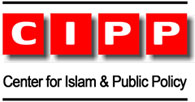By Sulayman S. Nyang
“The public square is not only the physical space that holds us together outside our private homes, but also the metaphorical symbol that represents the actuality and potentiality of civil society”
The Muslim Americans seem to have to come of age in America. Finally, the nation’s leaders and media have added them to the list of ethnic and religious minorities whose problems and conditions warrant conversational or literary discourse. This growing interest and coverage in the media has led many scholars, journalists and ordinary citizens to ask: Who are these Muslims and how are they going to fit in the larger American political and cultural context? These questions are part of the larger focus of the Project MAPS: Muslims in the American Public Square, based at the Center for Muslim-Christian Understanding in the School of Foreign Service of Georgetown University in Washington, D.C. This study, funded by the Pew Charitable Trusts, is part of a larger Pew initiative: “Religion in the American Public Square” that will examine Muslim, Catholic, mainline Protestant, evangelical Christian, African American Christian, Hispanic Christian and Jewish communities. Each such study will be the work of researchers and scholars drawn primarily from that community.
Why the Public Square: In contemporary American religious discourse the term “Public Square” has come to denote that social space in which the ordinary human being interacts with other members of society outside his family life. Such a field of activity encompasses a wide range of human events that bring together members of various faith communities in the United States of America. It also serves as a theater where social, moral, intellectual and cultural challenges to our common humanity are played out and settled. The public square, one can argue, is the sphere where men and women are called upon to speak the language of civility and to compete in the doing of good as the Qur‘an clearly states in Suratul Mulk: The One Who created death and life, so that He may put you to test, to find out which of you is best in deeds: He is the All-Mighty, the All-forgiving (67:2). In other words, the public square is not only the physical space that holds us together outside our private homes, but also the metaphorical symbol that represents the actuality and potentiality of civil society. For those of us living in the United States where the doctrine of separation of church and state is widely embraced, the public square is that domain of life where Man and Woman are free to articulate and replicate socially and publicly how and what they feel privately without incurring the wrath of a state bent on imposing a dogma or suffering at the hands of a bigoted religious rival. In the coming issues of this newsletter the activities and experiences of American Muslims in the Public Square will be the subject of discourse. Both the positive and the negative aspects of this experience will receive our attention.
The Muslim Americans are broadly classified as immigrants and native-born. These sociological categories are heuristic devices that help us understand our mental and physical fields of operation. Within a single family one finds immigrant parents fathering and mothering native-born children. These second-generation children have much in common with children of native-born Muslim Americans who have spent their entire lives in the United States. Because of these sociological realities and differences within the larger Muslim community in the country, it is imperative for the Muslim leaders at the national, state and local levels to pay greater attention to the challenges and opportunities in the Public Square. The Muslim American community is a microcosm of Global Islam. This is to say; when we take stock of our diversity we find that alphabetically our membership ranges from Albanians, Afghans and Algerians at one end to Yemenis and Zanzibar on the other. Between these two ends of the alphabetical spectrum are the Arabs, Bengalis, Bosnians, Caribbean, Chinese, Indians, Indonesians, Iranians, Lebanese, Pakistanis, Palestinians, Senegalese, Sudanese, Somalis and Turks. Our diversity is not only evident in our national origins but also in the Madhabian and Tariqian differences that historically fragmented our communities. What is comforting to some of us is the fact that here in the United States many of these old differences are beginning to lose their divisive powers and a new sense of Muslim solidarity is in the making. Such solidarity can develop only when the Public Square is used by Muslims to explain the nature and complexities of their faith to fellow Americans while acknowledging the diversity of opinions both inside and outside their community.
These are the fruits of a liberal democracy, a society where no individual and no single group capture the state to the point of dictating to others the contents of their beliefs and the manner in which to lead their lives. In this context, one should add that the Public Square does not have to evolve into a moral and spiritual jungle where everything and anything go. The morality that shapes the conduct of men and women in society and the language of discourse between civilized humanity could derive much inspiration and stimulation from the scriptures that bind the members of the faith communities of our country. This is the view of Muslims who believe the Qur’an provides them with a moral compass to navigate the stormy waters of life. Let us enter the Public Square and join our fellow citizens in the moral and spiritual education of America.
Sulayman S. Nyang is a professor of African Studies at Howard University, Washington, DC., and co-principal investigator of the Project MAPS.
